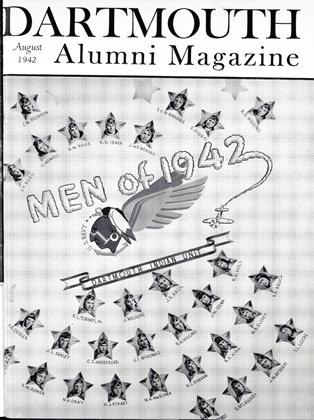editedBy H. L. Childs '19 and J. B. Whitton.Princeton University Press, 1942. Pp. xii †355. $3.75.
THIS COLLECTION OF eight articles was written by staff members of the Princeton Listening Center, established by the School of Public and International Affairs and financed by the Rockefeller Foundation. Without this invaluable work in understanding foreign (allied and enemy) broadcast propaganda from November 1939 to July 1941 the subsequent work of the Federal Communications Commission would have been a mad scramble beginning just a few months before war actually arrived.
Essays include an historical survey of radio in international politics from the days of Wilson's Fourteen Points, a typing of foreign radio propaganda, the American short-wave audience, and a valuable study of trends and patterns of radio propaganda during 1939-1941. The early clumsiness of English and French broadcasts, the naivety of the Italians, and the mastery of detail of the Germans are all in sharp contrast. And the United States was far behind them all, despite our supreme development of radio engineering and commercial advertising. It is important to note Professor Childs' estimate that whereas about one-third of our radio sets are equipped for short-wave reception, the audience is probable under 1% of the population. Our broadcasts to Europe have a much larger audience, despite enemy censorship and terrorism.
Dartmouth's alumni and ex-faculty mem- bers on this study included Prof. Childs (who outlined and supervised the plan of research) and Prof. Hadley Cantril '28both formerly at Dartmouth and now at Princeton.
 View Full Issue
View Full Issue
More From This Issue
C. N. Allen '24
-
 Letters to the Editor
Letters to the EditorLetters
April 1943 -
 Books
BooksA WOMAN'S BEST YEARS
June 1935 By C. N. Allen '24 -
 Books
BooksTHE PSYCHOLOGY OF RADIO
January 1936 By C. N. Allen '24 -
 Books
BooksADVERTISING,
October 1947 By C. N. Allen '24 -
 Class Notes
Class Notes1924's Big Twenty-Fifth
July 1949 By C. N. ALLEN '24 -
 Books
BooksTHE PLANS OF MEN
July 1940 By C. N. Allen '24, Harold G. Rugg
Books
-
 Books
BooksProfessor Roy P. Forster
November 1946 -
 Books
BooksASIAN-AMERICAN HERITAGE: AN ANTHOLOGY OF PROSE AND POETRY.
July 1974 By ALEXANDER LEVIN -
 Books
BooksMRS. BRIDGE.
FEBRUARY 1959 By CLIFF JORDAN '45 -
 Books
BooksTHE IMPACT OF FEDERAL TAXES
May 1943 By Lloyd P. Rice -
 Books
BooksCULTURE AND EDUCATION IN AMERICA.
NOVEMBER 1931 By R. C. N -
 Books
BooksANALYTIC GEOMETRY.
December 1936 By Robin Robinson '24








